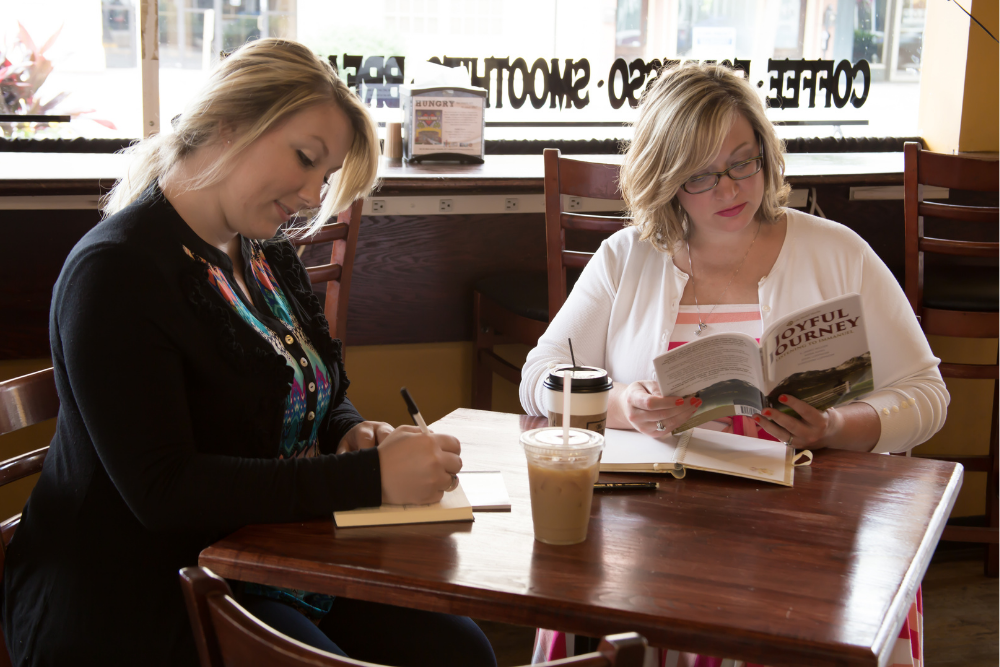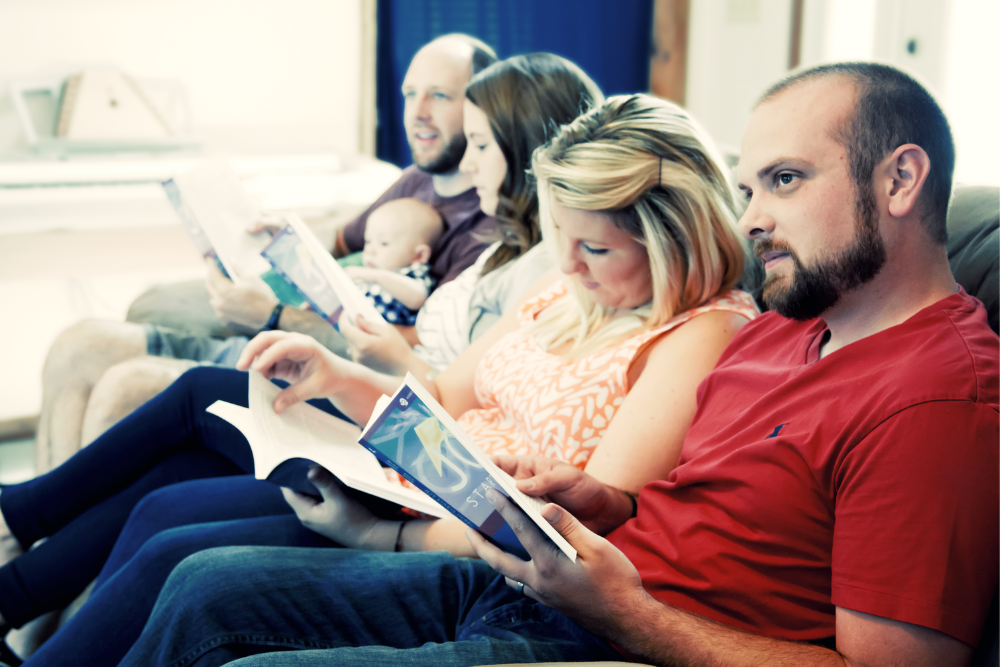The following article was originally published on ChrisMorton.info.
Take a look at Connexus to learn how your church can embrace the depressed and others in need.
The sting of Robin Williams’ death strikes in a sore place in the cultural subconscious next to the memories of Phillip Seymore Hoffman and Mitch Hedberg. All death is tragic. Suicide especially.
The death of Robin casts a particular shadow on those of my generation. Aladdin and Hook are the stories of our childhood. Patch Adams, Dead Poets Society and Good Will Hunting taught us how to grow up.
Depression is tragic. When it affects someone like Robin, we are all hurt.
Depression is also normal, natural and must be responded to within the church.
We can’t eliminate depression or suicide. But we can, and we must, become a refuge for those who experience it.
Let’s admit we have a problem
Depression has been a lifelong companion for me. It makes up some of my earliest and strongest memories. It hovers on the horizon of my future.
The first time I remember something akin to depression was a desperate loneliness I experienced around age eight. Like many High Schoolers, I struggled with a sense of hopelessness and self-hatred. I lost all motivation and moved lethargically for most of my junior year.
In college, depression got in the way of my relationships. When I was down, others felt the need to withdraw. I was cynical, angry and very, very dark. Who could blame them?
When I get depressed, it’s incredibly obvious. I start wearing dark clothes. I stop caring for my body. I duck around corners to avoid friends. I stay awake all night and sleep all day.
When I was 23, a mentor of mine told me “Chris, we like you. You are very broken right now. We want to find you some help.” They made some calls and helped me find a counselor.
It was the best thing that ever happened to me.
Which is why it strikes me as complete and utter insanity that so many churches have no idea what to do with the depressed.
The “D” Word
Why was I 23 years old before someone helped me get help?
I cannot tell you the level of frustration that this question holds for me.
Depression is woven throughout the story of scripture. David wrote about depression. Jesus prayed through depression.
Depression is common. Depression is physiological. It can begin as a natural response to difficult circumstances. Unaddressed, it can become a lifestyle. In time, it can rearrange your brain and become your new normal.
Depression is not, by definition, demonic. (Although I’m sure they don’t help.)
Depression is not cured by just reading your Bible and praying.
Depression is also not a bad thing.
The (other) reality that the church can no longer ignore
There’s a lot of talk about what the changes in culture that the church can no longer ignore. Much effort (my own included) has been put into helping the church think missionally. This has been mostly theological (teaching about the Missio Dei) and somewhat ecclesiological (forming missional communities.)
There is another more functional reality that the church can no longer ignore: Our society is moving towards greater emotional openness.
People want to know and be known. This is why Louis C.K.’s disturbingly authentic brand of humor rings true. This is why Tina Fey can be open about all the awkwardness of her life as a woman. This is why Brené Brown can talk about shame and vulnerability and get millions of Youtube views.
The internet allows for both anonymity and broadcasting. Our world now has endless safe havens for people to share fears and air grievances.
The culture is revising it’s expectations for “putting on a good face.” We’re rethinking what it means to make a good impression.
We are becoming collectively aware that life is hard. We are championing those who know how to articulate that.
Or to put it more coarsely:
We’re tired of the crap.
We need places to tell it like it is.
Five Features of a Safe Church
1. A Theology of Darkness
Scriptures are full of a theology of darkness, although it seems vague or completely absent in many churches. God created out of darkness. The psalmist claimed that the darkness was his closest friend. Jesus’ ministry often led him to places of darkness.
God is light, and in him there is no darkness.
We are not God.
Therefore, in us, there is darkness.
Many churches try to avoid darkness. We sing happy songs. We tell stories of victory. We hide our fears and shortcomings.
Accepting the darkness inside of us is not the same as sinning. Being tempted is not a crime. Feeling depressed is not a sign of failure.
Why does David call the darkness his only friend? Why did Paul describe the agony of this thorn in the flesh? Because ignorance of our darkness is how we become captive to it.
We need to name our darkness. We need to feel its prickly coldness. We need to surf along its edges.
Knowing our darkness is key to knowing who we are. It is crucial to knowing what to pray for. It is often the place we meet God.
2. Vulnerable Leadership
It’s hard these days to be a charismatic leader. You just have to look to Seattle.
It’s often said that if you want something to be found at the core of your church, it has to be championed by the senior leadership. If you want church to feel safe, your pastors, elders and ministers have to set the standard for vulnerable openness.
This doesn’t mean telling everyone everything. Some struggles should be private. However, it does mean that you must discuss your own growth trajectory.
Rather than telling the congregation “This is what the Bible says,” you say “Here’s what I have learned/am learning/need to change because of the teaching of Jesus.” Knowing the church is safe means leadership demonstrating a willingness to risk vulnerability.
3. Emotional Intelligence
Remember how Jesus said “let your yes be yes and your no be no?” This is actually pretty hard to do. Some of us are bad at saying no. Some of us are afraid of saying yes.
One step to improving this ability is improving our overall emotional intelligence. While there is a lot to this process, it begins with knowing and articulating your own emotional state.
A safe church community must include those who have matured past the point of being ruled by their emotions. They know how to respond appropriately to explosive moments, overwhelming tragedy or pure joy. They also model this for others.
If you want to be a safe church, display emotional intelligence and disciple others to do so as well.
4. Storytelling
One key to knowing that you are in a safe place is knowing you can tell your story.
It’s not as easy as it sounds. We’re conditioned to describing ourselves as our jobs, our families or our conversion experience. We are full of unwanted insecurities.
Telling stories requires both bravery, forethought, and believe it or not, structure.
Bravery is institutional, not individual. It comes from seeing others tell their story and knowing that people will respond with appreciation and love. Bravery is developed by seeing this modeled by leaders and friends.
A little (but not too much) forethought is necessary. Good stories have a beginning, middle and end. Preparing is also a sign of respect for the listener.
Structure is a time and place set aside for storytelling. This could be a formal prayer request time at the end of a small group meeting. It could be an invite to lunch with the expectation that “we will share stories.” At Austin Mustard Seed, we spent this summer telling stories and asking discipleship related questions in gender specific groups. Our hope is to instill a desire for storytelling.
5. Safe Spaces
If our churches are to become safe, we’ll have to create safe spaces intentionally.
A safe space is a time in place that welcomes. It avoids putting people on alert and is relationally appropriate.
For insiders, already accustom to a church’s ways, a small group can be a safe space. For outsiders, having deep conversations in a stranger’s home is likely unnatural and unsettling. Since so many in the west have preconceived notions or even toxic baggage about the church, it can be very hard to make traditional church buildings a safe space.
Vox Veniae, a church in East Austin, intentionally set out to create a safe space. They took over a small boarded up building. Later they found out it had been the location of a deadly shooting.
Instead of moving right in, they took a year to clean the place up, and offer open houses for the community to discuss how the space would be used. On Sundays now, the space features dark ceilings, low lighting, both chairs and couches and calm music. It still feels like a club, but now, it’s a safe one.
They’ve also helped plant two churches in the last year, in order to stay small. It’s hard to feel safe in a crowd.
Robin Williams death should remind the church that if we do not learn how to respond to depression, we will all suffer the consequences.
How is your church becoming a safe place?
Get the word out! Please Tweet this or Share on Facebook.









